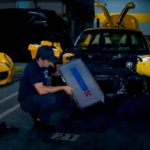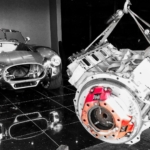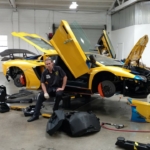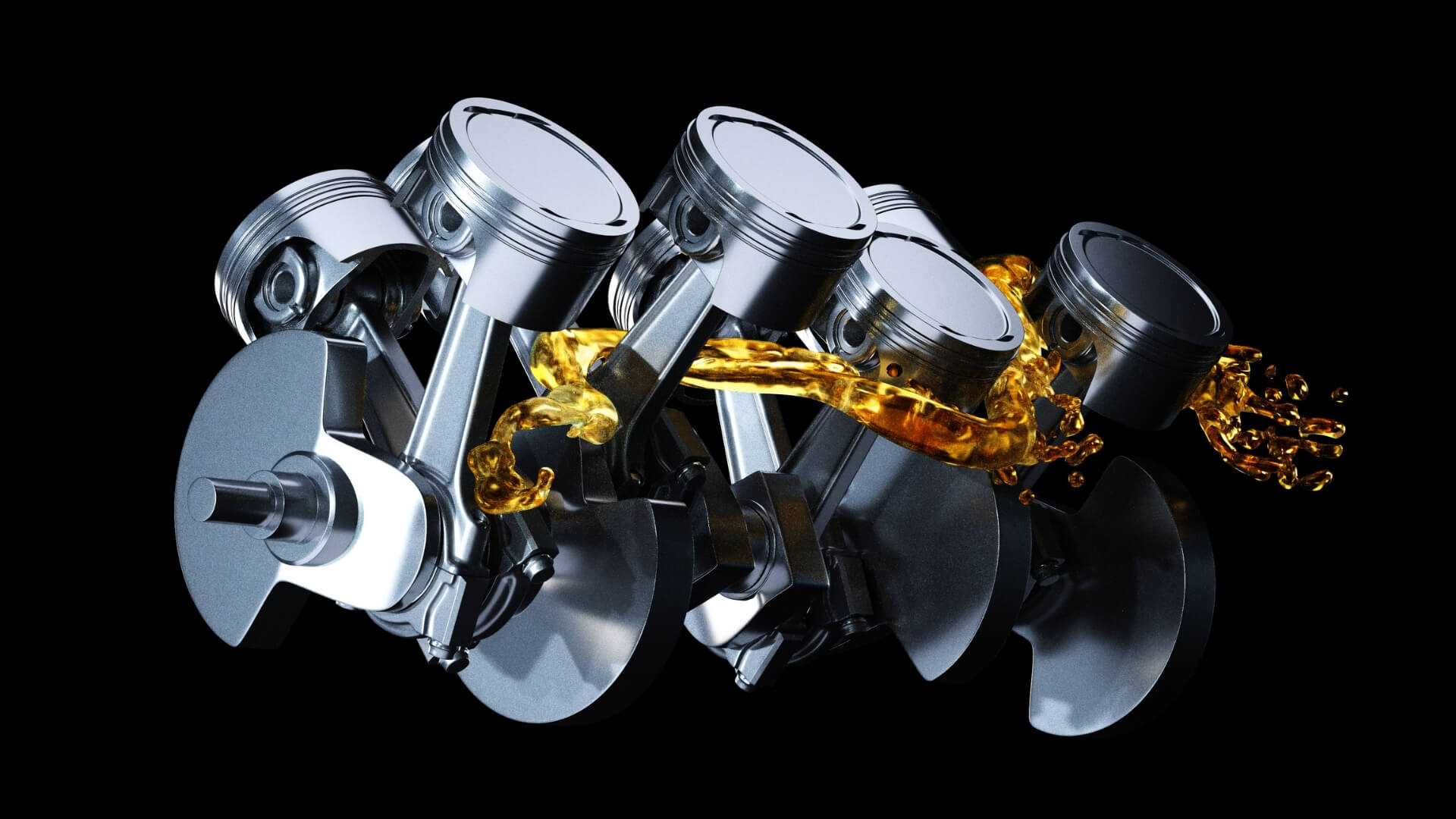WHICH IS BETTER AND WHY?
Friction in your engine is bad. It’s what causes wear and damage to the metal components of your engine. To prevent this, we use engine oil. Engine oil is designed to create a boundary layer between smooth metal surfaces in order to prevent friction. A lot of independent testers are using a bearing test to determine the best oil for an engine, however, this sort of test does not replicate the frictions in your engine. Instead of testing the oil between two smooth surfaces, they test it between two points.
The major flaw in doing this is that engine oil isn’t able to create a boundary layer between two points. That’s not its job and it’s not what the oil is designed to do. Imagine rubbing oil on your hands. Your hands glide together smoothly because the oil creates a boundary layer that prevents friction. Now take the tip of a nail and drag it across your palm. The friction the nail experiences is the same regardless of if there is oil on your hand because it is a single point that cuts through the boundary layer, rendering the oil useless as a lubricant. The same principle applies to these bearing tests. They create a situation where there is no boundary layer, and use that to determine the efficacy of the oil’s boundary layer. Sounds pretty silly, right? In the end, no oil boundary layer is able to get between the two points, no matter what type of engine oil is used and all that gets tested is the friction between the two metal points.
So…
Which oil is better? And why does Mobil 1 do better than Redline in the bearing test? To understand that, we need to first learn a little about the differences between these oils.
Let’s start with Mobil 1. The Mobil 1 MSDS says it’s made from “distillates, heavy” which indicates that it is petroleum based. Petroleum based oils have been hydrocracked (refined), a process which results in properties that are not desirable for modern oils, specifically they become non-polar and saturated. Because they are non-polar, they don’t have a great ability to hold onto additives, and because they are saturated, they don’t have the ability to solvate additives well. Think of a glass of salt water. You can keep dissolving more and more salt (the solute) into the water (the solvent), but eventually you get to a point where the water can no longer solvate anymore salt. It becomes saturated and the salt won’t dissolve no matter how hard you stir.
Petroleum based oils already have a high saturation level and have a hard time holding onto any added solutes. Anti-wear additives, extreme pressure additives, viscosity index additives, all the solutes that assist the oil in doing its job have a difficult time staying in the oil. As the oil is used, these additives will separate causing the oil’s properties to change and not be as effective.
Conversely, group 5 oils like Redline have a synthetic ester base. Unlike petroleum based oil, ester oil is extremely polar, unsaturated and accepting of solutes. The polarity means it attracts the additives strongly, and the low saturation level means the additives easily dissolve into it. The oil is able to hold onto the additives for the duration of its life which ensures its properties don’t change over time.
When we add this all up, we can understand why Mobil 1 performs better than Redline in the bearing test. As we know, there is a point to point friction test being used that doesn’t allow oil to get between and create a barrier. The result from the Redline test is that oil isn’t able to get between the metals to prevent friction and we end up with significant wear, so it scores poorly.
When Mobil 1 is tested, no oil is able to create a barrier in this instance either, however, the anti-wear additives readily leak out of the petroleum based oil and attach to the metal. These additives create the reduction in friction, causing less wear and it ends up scoring better in the test. So as counterintuitive as it sounds, Mobil 1 scores better on this test simply because it is inferior oil not capable of holding onto its additives. And since the circumstances from this test don’t exist in an engine, the results really don’t mean anything anyway.
Just based on what we’ve learned, it seems pretty logical that ester based oil would be a better oil for your car. But what should we actually test to get the right answer?
The most important factor of your oils ability to prevent friction is its viscosity, basically how thick the oil is. If it’s too thick, it will put strain on the engine components (accurate?), but if it’s too thin, it won’t create a proper boundary layer. So let’s just pick the right viscosity and we’re done, right? Unfortunately it’s not that easy. As oil heats up it gets thinner and doesn’t perform its job as well. To combat this, manufacturers add Viscosity Index Improvers. These additives are designed to expand as they get hotter. So, as the oil heats up and wants to get thinner, these additives expand to keep the oil at its optimal viscosity. As we learned earlier, the petroleum based oil aren’t able to hold onto these additive, so let’s see how much of a difference that actually makes.
The test we developed was pretty simple; basically how much pressure is created when pushing the oil through a hole. Higher viscosity means more pressure is created. The pushing of the oil was from an RPM adjustable drill pump and the hole was a tube connected to an orifice monitored by a pressure transducer which would tell us how pressure was being created.
Appropriate measures were taken to prevent contamination and ensure consistency in temperature. We tested each manufacturer’s 10w-40 oil in the four following circumstances: new oil cold, new oil hot (at operating engine temp), used oil (after 10,000 miles) cold, used oil hot. A good oil would show minimal reduction in viscosity after 10,000 miles. The results were pretty definitive.
Redline on the cold tests dropped from 23.8 PSI (new) to 23.5 PSI (used), a 1.26% reduction
Redline on the hot tests dropped from 17.5 PSI (new) to 17.0 PSI (used), a 2.86% reduction
Mobil 1 on the cold tests dropped from 27.1 PSI (new) to 23.5 PSI (used), a 13.28% reduction
Mobil 1 on the hot tests dropped from 15.6 PSI (new) to 13.1 PSI (used), a 16.03% reduction
We can see that even after 10,000 miles. Redline still operates very near its original specification! It’s still right around a 40 weight oil and still meeting the standards required by the engine manufacturer. Mobil 1, however, had a huge drop of 16% at operating temperature! This means that the 40 weight oil that your engine needs to operate properly is now a 30 or 25 weight, much thinner and well below what the engine needs! Hopefully this clears up some confusion and will help you make an educated decision.
Contact Us today for Your Next Supercar Service










Comments
avenue17